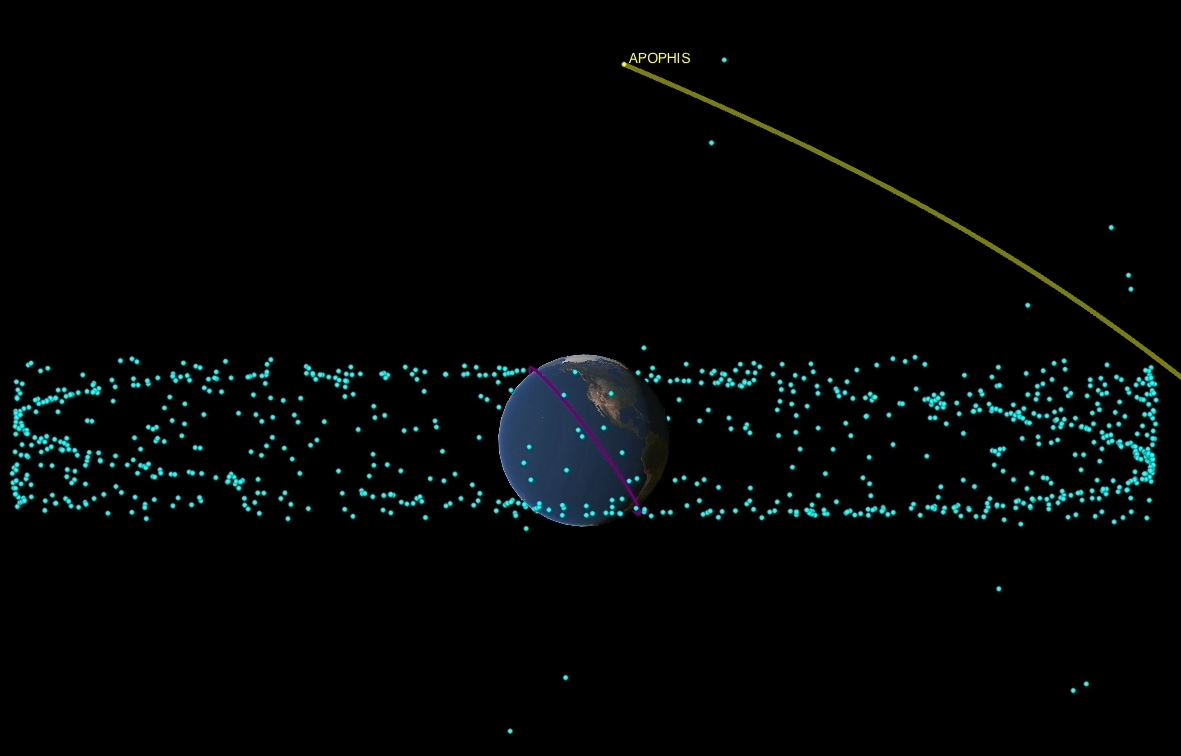European Space Agency prepares mission to asteroid that will pass close to Earth in 2029

The European Space Agency (ESA) is preparing a mission to closely monitor 99942 Apophis, the asteroid that will pass closer to Earth than some of the satellites orbiting it. The ESA announced the endeavour on Tuesday as a means to help prevent future collisions with asteroids.
Apophis will pass by Earth on 13 April 2029, but there will be no collision, the ESA says. "Astronomers have calculated that a collision between the asteroid and Earth has been ruled out for at least the next 100 years," it said.
However, the 375m-diameter asteroid will pass within 32,000km of the Earth's surface, closer than telecommunications satellites in geostationary orbit. This is a unique opportunity for research, says the ESA, considering it is only once every 5,000 or 10,000 years that such a large body passes so close to the Earth.
Changing orbit
The ESA plans to send a spacecraft to the asteroid as part of the Ramses mission to study its entire passage past the Earth. The Earth's gravitational pull is expected to affect Apophis, possibly causing earthquakes or landslides on the asteroid or changing its orbit.
By analysing how Apophis changes as it passes, scientists will learn about an asteroid's response to external forces, as well as its composition, internal structure, cohesion, mass, density and porosity. These are all important properties for determining how a dangerous asteroid on a collision course with Earth can be modified from orbit.
The data collected by the mission will also provide further insight into the origin and evolution of the solar system because "asteroids are also time capsules, formed more than 4 billion years ago", the ESA says.
"For the first time, nature is bringing us an asteroid"
"There is still so much to learn about asteroids, but until now, we have had to travel far into the solar system to study them and conduct experiments ourselves to interact with the surface," said Patrick Michel, research director of the Côte d'Azur Observatory in France.
"For the first time, nature is bringing us an asteroid and doing the experiment itself. All we have to do is watch as Apophis is stretched and compressed by strong tidal forces, which can cause landslides and other disturbances, and where new material can come to the surface."
Ramses is scheduled for launch in April 2028, with the spacecraft arriving at Apophis in February 2029, two months before it passes Earth. Preparations for the mission have now begun, with the final go-ahead expected at an ESA ministerial summit in November 2025.
The passage of 99942 Apophis will also be visible to the naked eye, weather permitting, for about 2 billion people in most of Europe and Africa, and parts of Asia, the ESA says.
US space agency NASA is also sending a spacecraft, OSIRIS-REx, to the asteroid, but it will not arrive until a month after the flyby.
© PHOTO NASA/ZUMA PRESS
Related news

